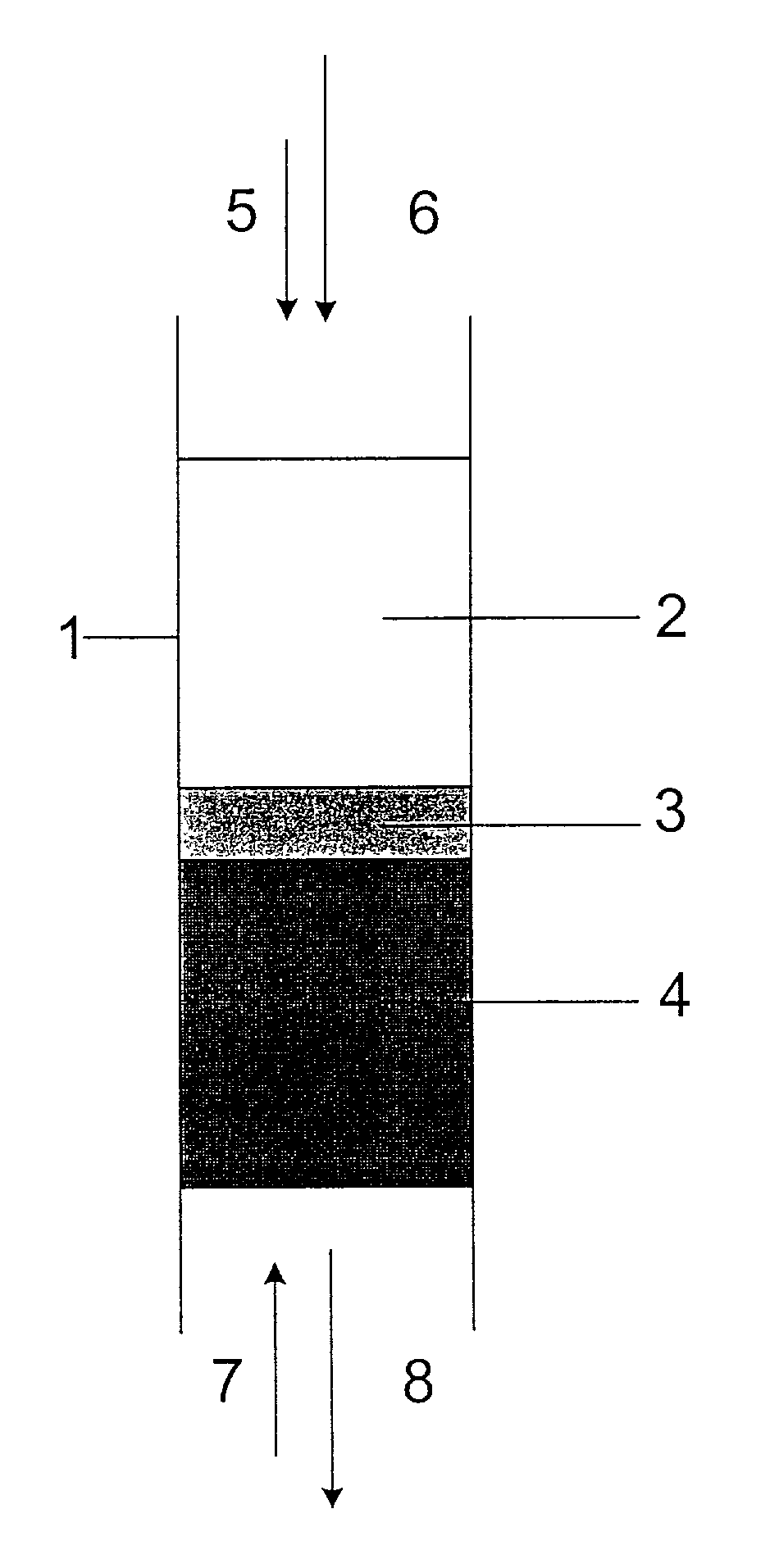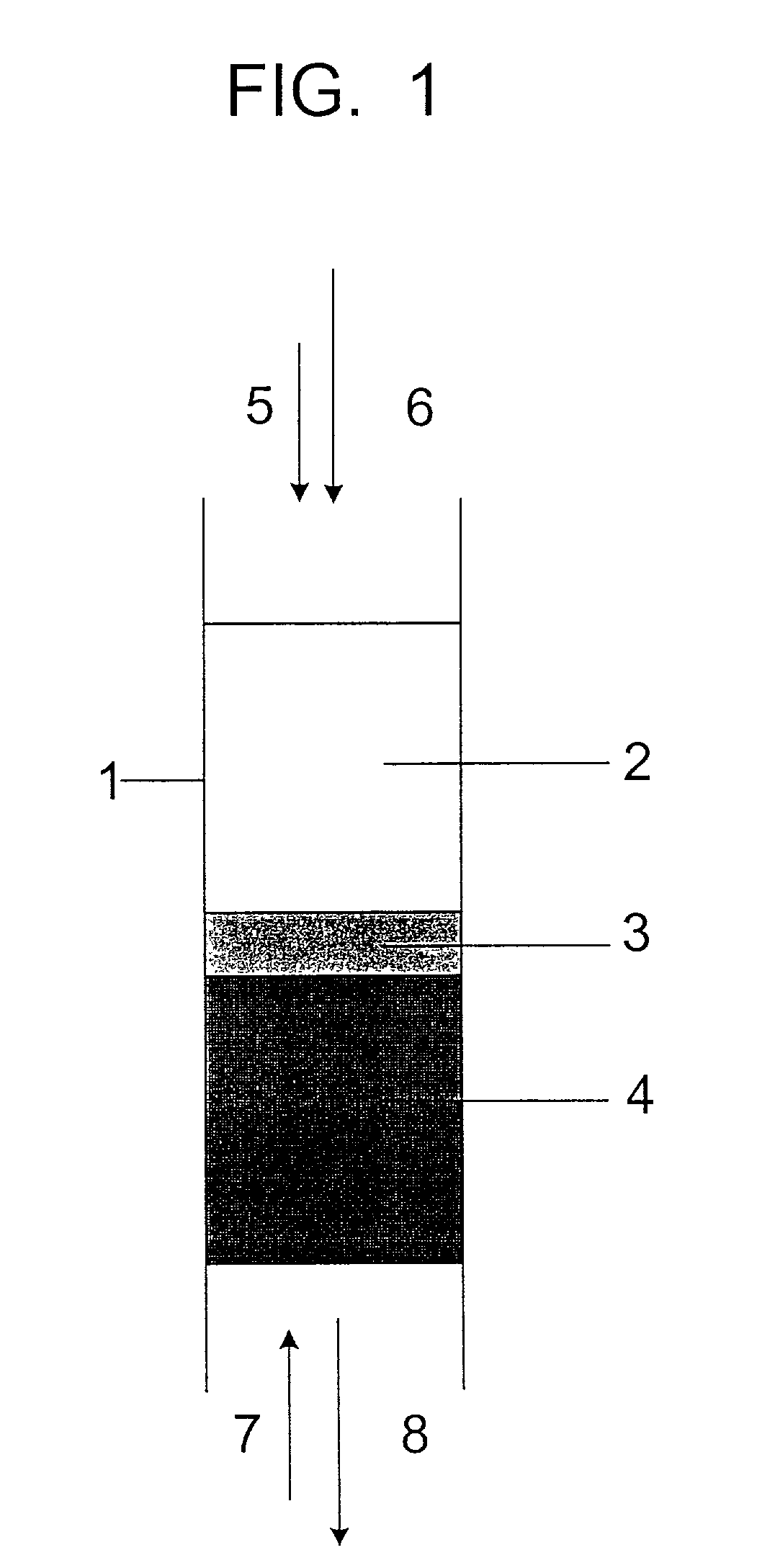Method and apparatus for reducing uranium trioxide
a technology of uranium trioxide and uranium oxide, which is applied in the field of methods and apparatus for reducing uranium trioxide, can solve the problems of increasing the cost of fluorination, reducing yield, and neither of these solutions is particularly satisfactory, and achieves the effects of reducing or avoiding the problems caused by uo2 shielding material from radiation, high dielectric loss factor, and easy microwave heating
- Summary
- Abstract
- Description
- Claims
- Application Information
AI Technical Summary
Benefits of technology
Problems solved by technology
Method used
Image
Examples
example 1
[0049]A 300 g load of non-pulverized UO3 powder having a moisture content of about 0.1% was placed in a quartz tube of 1″ diameter on the top of a layer of 25 g UO2 supported on a porous alumina disk. The quartz tube was placed inside a vertical microwave cavity connected to a microwave generator capable of operating at a frequency of 2450 MHz, in such a way that in operation the microwave energy passed first through the UO3 layer, before encountering the UO3 / UO2 interface. A mixture of hydrogen and nitrogen gas was supplied to the bottom of the quartz tube and passed upwards through the tube. When the microwave generator was switched on at a 0.5 to 1 kW power level, the UO2 heated up to a temperature of 900 to 1100° C. The gas coming out of the top end of the quartz tube contained water vapor as a product of the uranium oxide reduction. When the reaction was completed, all the UO3 layer was converted to UO2 with an O / U ratio in a range of 2.00 to 2.01. The UO2 product had a uniform...
example 2
[0051]Two powder feeders were connected, one to the top end and one to the bottom end of the quartz reactor described in Example 1. The bottom part of the reactor was filled with UO2. The top powder feeder supplied UO3 powder (540 g total) into the reactor above the UO2 material. The bottom feeder operated synchronously with the top feeder to remove UO2 product from the reactor. The product coming out of the bottom feeder was collected in a container under inert (nitrogen) atmosphere, to avoid oxidation during cool down. The reducing hydrogen / nitrogen mixture was supplied from the bottom end, and the exhaust gas containing water vapors came out at the top end.
[0052]UO3 reduction with hydrogen was initiated at a microwave power of 1 kW. The material collected in the container at the bottom of the reactor had a composition of UO2 with an O / U ratio of 2.00 to 2.01, determined as described in Example 1. The amount of hydrogen consumed in the reduction was 67% of the stoichiometric value...
example 3
[0053]A 450 g load of non-pulverized UO3 powder was placed in the reactor as described in Example 1. The bottom part of the reactor was filled with UO2. A gas mixture of hydrogen and methane was supplied from the bottom of the quartz tube. The reduction was initiated at 0.5 to 1 kW microwave power level. The gas coming out of the top end contained water vapor and carbon oxides. When the reaction was completed, all the UO3 layer was converted to UO2 with an O / U ratio of 2.00 to 2.01. The hydrogen consumption was found to be 40% of the stoichiometric amount necessary to reduce UO3 by Equation (1).
[0054]It is believed that the hydrogen consumption was lower than that required by Equation (1) because a fraction of the UO3 was reduced by methane, and also because of decomposition of UO3 according to Equation (2).
PUM
| Property | Measurement | Unit |
|---|---|---|
| temperature | aaaaa | aaaaa |
| temperature | aaaaa | aaaaa |
| frequencies | aaaaa | aaaaa |
Abstract
Description
Claims
Application Information
 Login to View More
Login to View More - R&D
- Intellectual Property
- Life Sciences
- Materials
- Tech Scout
- Unparalleled Data Quality
- Higher Quality Content
- 60% Fewer Hallucinations
Browse by: Latest US Patents, China's latest patents, Technical Efficacy Thesaurus, Application Domain, Technology Topic, Popular Technical Reports.
© 2025 PatSnap. All rights reserved.Legal|Privacy policy|Modern Slavery Act Transparency Statement|Sitemap|About US| Contact US: help@patsnap.com



